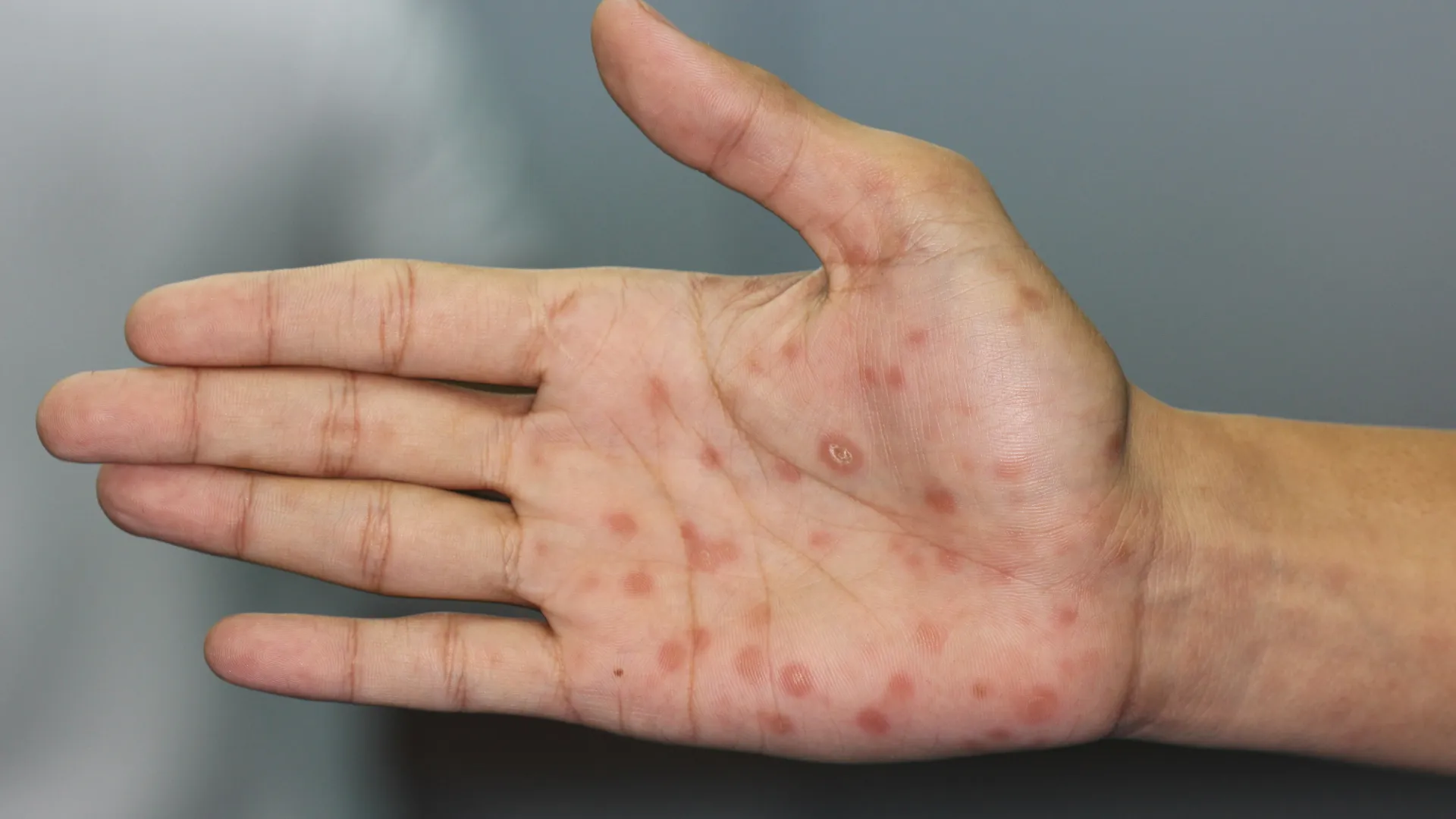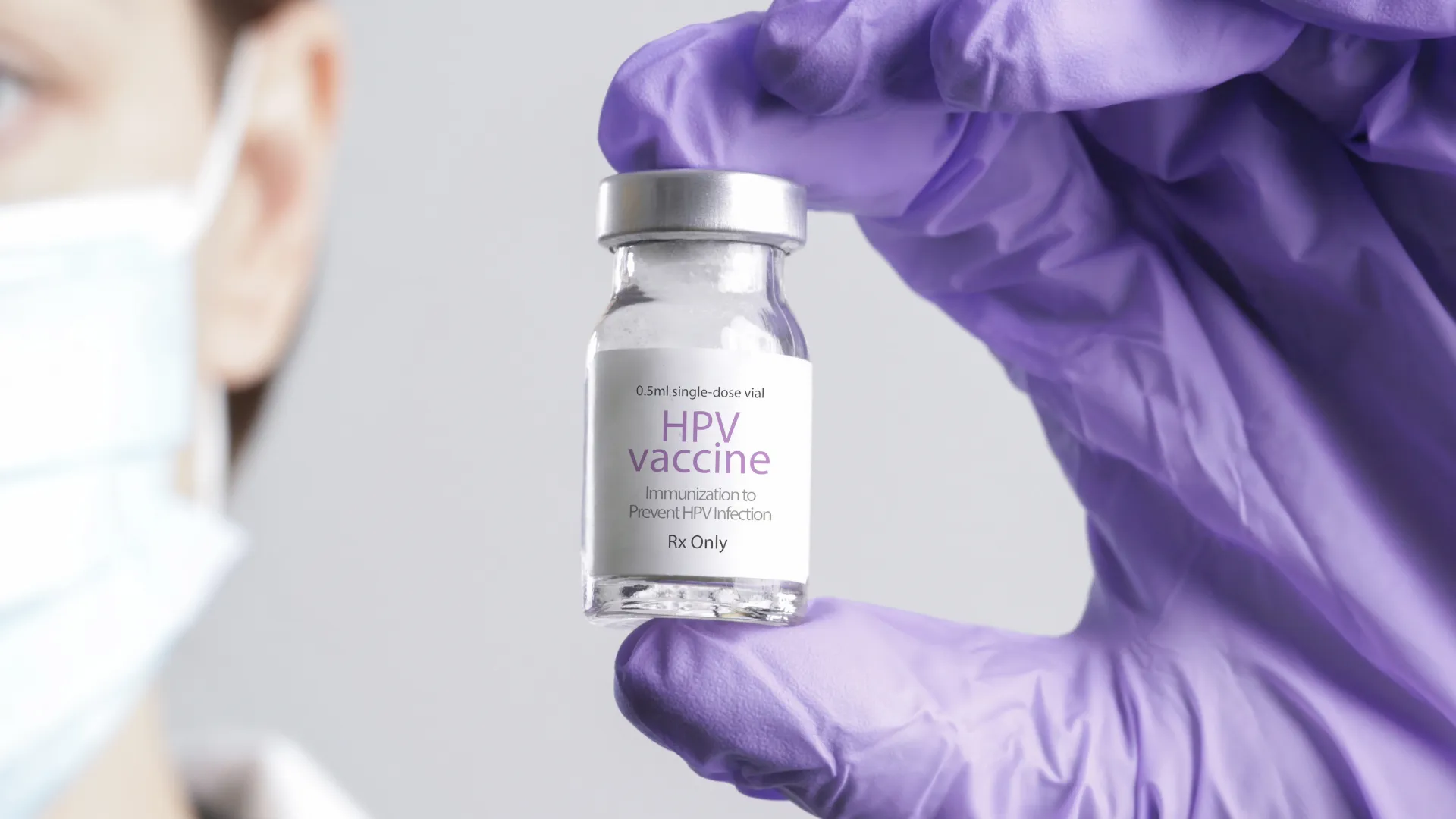Syphilis
Syphilis is a sexually transmitted disease (STD) caused by the bacterium Treponema pallidum (Spirochaeta pallida). Transmission occurs primarily through sexual contact (vaginal, anal and oral) but it can also happen through direct skin contact with lesions. Additionally, it can be transmitted from mother to child during pregnancy or childbirth, leading to serious health consequences for the fetus (congenital syphilis).
Clinical picture
Syphilis progresses through four stages, each characterized by different symptoms. In some cases, infection may occur without apparent symptoms or symptoms may arise from different stages simultaneously.
Primary syphilis
The primary symptom in this stage is the syphilitic ulcer, a small sore that does not cause itching or pain. It usually appears about three weeks after exposure to the bacterium and is located on the genitals, anal region or in the oral cavity. Sometimes it goes unnoticed as it may be located inside the vagina or rectum. If left untreated, the ulcer heals on its own in about six weeks.
Secondary syphilis
In the second stage, a characteristic rash appears on the torso, palms, soles and genitals (syphilitic rash). Nail and scalp involvement may also be observed. General symptoms such as sore throat, swollen lymph nodes, fever and muscle pain may coexist. If untreated, these symptoms subside and the disease progresses to the latent phase.
Latent syphilis
This phase is characterized by the absence of symptoms. Diagnosis is made exclusively through laboratory tests. Latent syphilis can last for years and monitoring is critical as the bacterium remains active in the body.
Tertiary syphilis
This stage is rare and occurs if treatment is not provided in the earlier stages. Complications include cardiovascular issues, neurosyphilis and bone damage. Vital organs such as the heart, brain and kidneys may be affected.
Diagnosis
The diagnosis of syphilis is primarily made through blood tests. The antibodies produced by the body can remain for many years (possibly for life), allowing for the diagnosis of both current and past infections. Diagnosis can also be made through samples taken from the ulcer or other skin lesions, as well as from cerebrospinal fluid in suspected cases of neurosyphilis.
Treatment
Syphilis treatment includes the administration of antibiotics, usually penicillin. In cases of penicillin allergy, alternative antibiotics may be administered. The dosage and duration of treatment depend on the stage of the infection. It is crucial for patients to strictly follow the treatment regimen and to monitor their progress with regular blood tests to confirm the treatment efficacy.
It is also important to:
- Avoid sexual contact until it is confirmed that the infection has resolved.
- Inform sexual partners so they can undergo testing. Recommendations are as follows:
- Recent partners: Sexual contacts within the last 90 days should be tested and treated if necessary.
- Older partners: For sexual contacts older than 90 days, testing is also recommended but the decision for treatment will depend on test results.
- Get screened for all sexually transmitted infections, as syphilis often coexists with other STDs.
Prevention
Prevention is crucial in avoiding the transmission of syphilis. The use of condoms during sexual intercourse and regular screening for STDs are the most effective measures.

